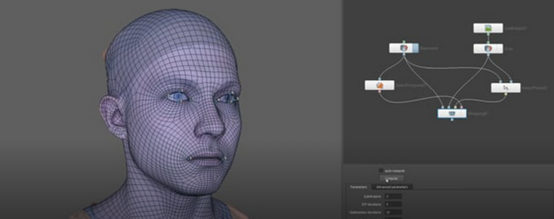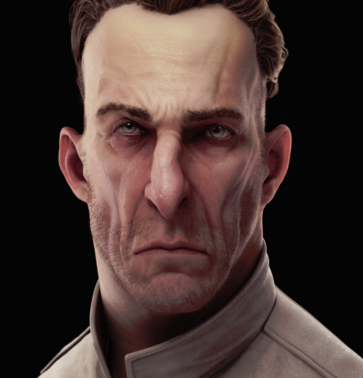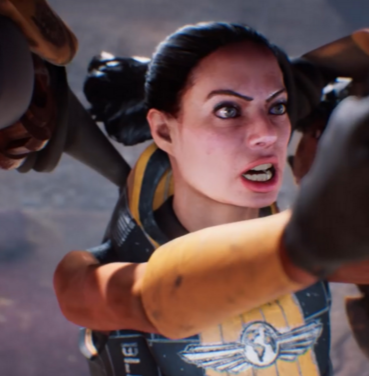OpticalFlowWrapping node fits a textured basemesh to a textured scan by finding similarities between their textures.
The node can be used to fit a neutral mesh of an actor’s face to 3D scans of his facial expressions. It renders pairs of images of both models from different angles and finds optical flow between the images. For each image pair it generates a set of decisions on where to more each pixel. All the decisions are then combined into a global solution.

R3DS::Wrap is a topology transfer tool. It allows to wrap existing topology around a 3D-scan or other highpoly model. It also includes pre-alignment, sculpting and texture baking features. As Wrap preserves vertex order and texture coordinates of original basemesh it can be used for creating morph targets of different facial expressions based on scans.

Wrap changes the way you process 3D-scan data. When working with a large set of similar objects like human scans Wrap makes it possible to take an existing basemesh and non-rigidly fit it to each and every scan.
It also provides a set of very useful scan processing tools like decimation, mesh filtering, texture projection and many more. Thanks to node-graph architecture once you’ve processed a single scan you can apply the same recipe to an unlimited number of other scans.

Wrap lets you convert a series of 3D-scans of actors to production ready characters sharing the same topology and texture coordinates
Given a series of 3D-scans of an actor’s facial expressions Wrap is used to generate a set of morph-targets for further animation

Wrapping a known topology around a full-body scan is a starting point to many autorigging tools
Wrap is widely used by virtual fitting room vendors. Fitting a body model with known topology makes it easy to adjust its shape, take measurements and a perform cloth simulation